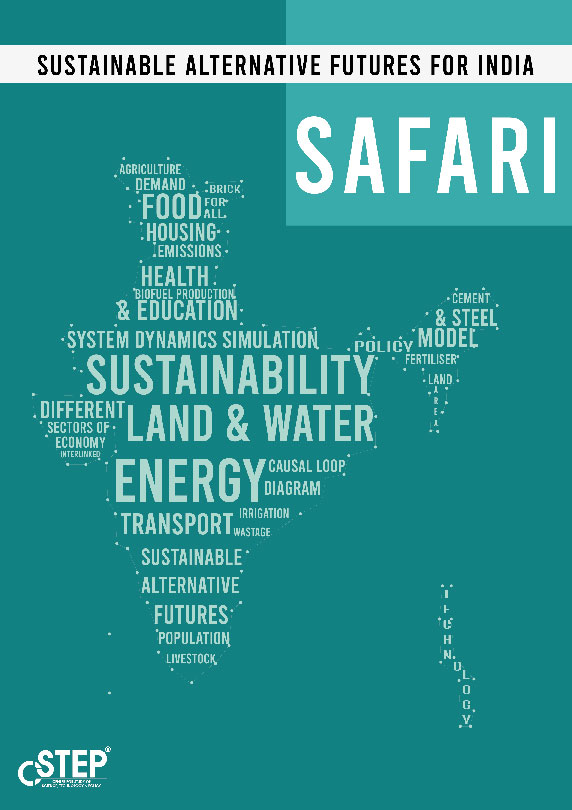Climate change mitigation involves strategies aimed at decreasing greenhouse gas emissions, promoting renewable energy sources, improving energy efficiency, and implementing sustainable practices. CSTEP focuses on building models to simulate India's future across sectors, such as transport, industries, buildings, agriculture, and forestry, to find interventions required to achieve a sustainable and secure future. Our work also involves the study of certain themes that cut across sectors (quality of life and development vs climate action, water and land demands for agriculture vs power, etc).
CSTEP's SAFARI model: Balancing development with climate action requires a good understanding of the interactions between sectors, natural resource systems, and environmental externalities. The Climate Change Mitigation at CSTEP has undertaken a modelling study with the aim to provide such an understanding and help create scenarios for low-carbon development through the use of an interactive simulation tool called Sustainable Alternative Futures for India (SAFARI). You can access the tool here.
SAFARI estimates the energy, emissions, and resources implications of achieving developmental goals such as food, housing, healthcare, education, power for all, and transport up to 2050. The user interface allows you to explore these implications as well as the trade-offs between them. Using SAFARI, you can create integrated scenarios across sectors and test out the impact of policy choices on energy, emissions, and resources. Ultimately, we hope that this tool can be used to provide insights into developing and tracking India's long-term strategy (LTS) in line with the Paris Agreement. For more information, please contact safari@cstep.in



Namma SAFARI: Low-carbon development pathways for Karnataka
The need for climate action is well established, not only to mitigate climate change but also to build resilience and prevent the depletion of resources due to overexploitation. Creating a roadmap towards a sustainable future requires a deep understanding of how each sector is expected to grow, and more importantly, how different sectors would interact with each other to co-evolve dynamically. Several models at the global scale and a few at the Indian scale have been created to facilitate this understanding.
Can Indian nuclear energy’s future be small, modular, and market-driven?
With the Union Budget 2025–26 announcement of a 100 GW target for nuclear energy capacity by 2047 and Rs 20,000 crore outlay for small modular reactors (SMRs), the government’s emphasis on nuclear energy expansion is clear. There is also a clear emphasis on public–private partnerships in nuclear energy in the last two consecutive union budgets. Historically, the Department of Atomic Energy (DAE) has struggled to meet its capacity targets, largely due to challenges in securing sufficient investments.
Alternative fuel: Maximising RDF use in Karnataka's cement industry
Karnataka generated an estimated 12,140 tonnes of municipal solid waste (MSW) per day in 2023, with Bengaluru alone accounting for nearly half of this total. Much of this waste remains unsegregated, unprocessed, and left to decompose in landfills. However, this waste holds the potential to solve a major challenge in Karnataka’s cement industry.
Can the 2025 union budget be a catalyst for offshore wind?
The Indian government has made commendable strides in promoting renewable energy (RE), including setting an ambitious target to auction 37 GW of offshore wind capacity by 2030. Offshore wind—a stable and reliable RE source—holds immense promise for diversifying India’s energy mix. However, achieving this goal will require significant financial and policy support. The upcoming Union Budget 2025 is an opportunity for the government to allocate additional funding and address key challenges to unlock the sector’s potential in India.
Empowering the youth to transform the urban landscape through systems thinking
Urbanisation is reshaping human settlements at an unprecedented pace, creating a complex interplay of identities, cultural practices, resources, and values within urban spaces. As India progresses towards becoming a developed nation, it is vital to ensure that every citizen enjoys a dignified life amidst this transformation. Currently, Indian